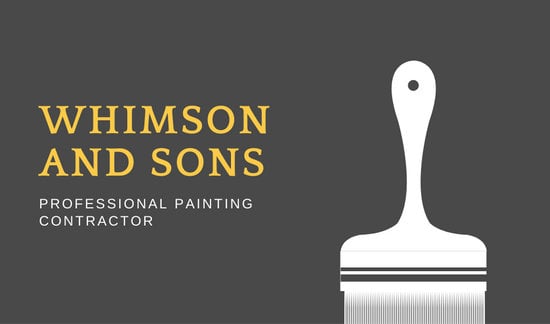Crucial Seasonal Aspects Of Commercial Exterior Painting: What You Must Recognize
Crucial Seasonal Aspects Of Commercial Exterior Painting: What You Must Recognize
Blog Article
Written By-Regan Skafte
When you're planning an industrial exterior painting job, seasonal aspects can make or damage your results. You'll intend to take into consideration exactly how temperature level and humidity impact paint application and drying out times. Selecting mouse click the next site can ensure your paint adheres effectively and lasts much longer. Yet which periods are absolutely the most effective for this kind of job? Allow's check out the key elements that can impact your job's success.
The Influence of Temperature Level on Paint Application
When you're intending a commercial exterior painting task, the temperature level can substantially affect how well the paint sticks and dries out.
Ideally, you intend to paint when temperatures range between 50 ° F and 85 ° F. If it's too cool, the paint might not heal properly, leading to concerns like peeling or cracking.
On the other side, if it's too hot, the paint can dry out too swiftly, protecting against proper adhesion and resulting in an unequal coating.
You should likewise think about the moment of day; early morning or late afternoon supplies cooler temperature levels, which can be a lot more favorable.
Constantly examine the manufacturer's referrals for the details paint you're using, as they often provide advice on the suitable temperature level array for optimal outcomes.
Humidity and Its Effect on Drying Times
Temperature level isn't the only ecological aspect that influences your commercial external paint job; humidity plays a substantial role also. High moisture degrees can slow down drying times substantially, affecting the total quality of your paint work.
When the air is saturated with moisture, the paint takes longer to cure, which can bring about concerns like inadequate bond and a greater danger of mold growth. If you're repainting on a specifically damp day, be planned for extensive wait times between coats.
LEED-certified painting contractors to monitor neighborhood climate condition and plan as necessary. Preferably, aim for moisture degrees between 40% and 70% for optimum drying out.
Maintaining these factors in mind guarantees your job remains on track and provides a lasting surface.
Best Seasons for Commercial Outside Paint Projects
What's the most effective time of year for your business external paint tasks?
Springtime and very early loss are usually your best bets. Throughout these periods, temperatures are light, and moisture degrees are usually lower, developing suitable problems for paint application and drying.
Prevent summertime's intense heat, which can create paint to dry as well swiftly, causing inadequate bond and surface. In a similar way, winter months's cool temperature levels can impede correct drying and healing, running the risk of the long life of your paint work.
Aim for days with temperature levels between 50 ° F and 85 ° F for ideal outcomes. Keep in wood painter near me to examine the local weather report for rain, as wet problems can wreck your job.
Preparation around these elements guarantees your paint project runs efficiently and lasts much longer.
Conclusion
In conclusion, preparing your business external painting jobs around seasonal factors to consider can make a substantial distinction in the outcome. By painting companies stony plain during the optimal temperatures and humidity levels, you'll guarantee much better attachment and drying out times. Bear in mind to watch on local weather prediction and choose the correct time of year-- springtime and very early loss are your best options. Taking these steps will help you accomplish a resilient and professional finish that lasts.
